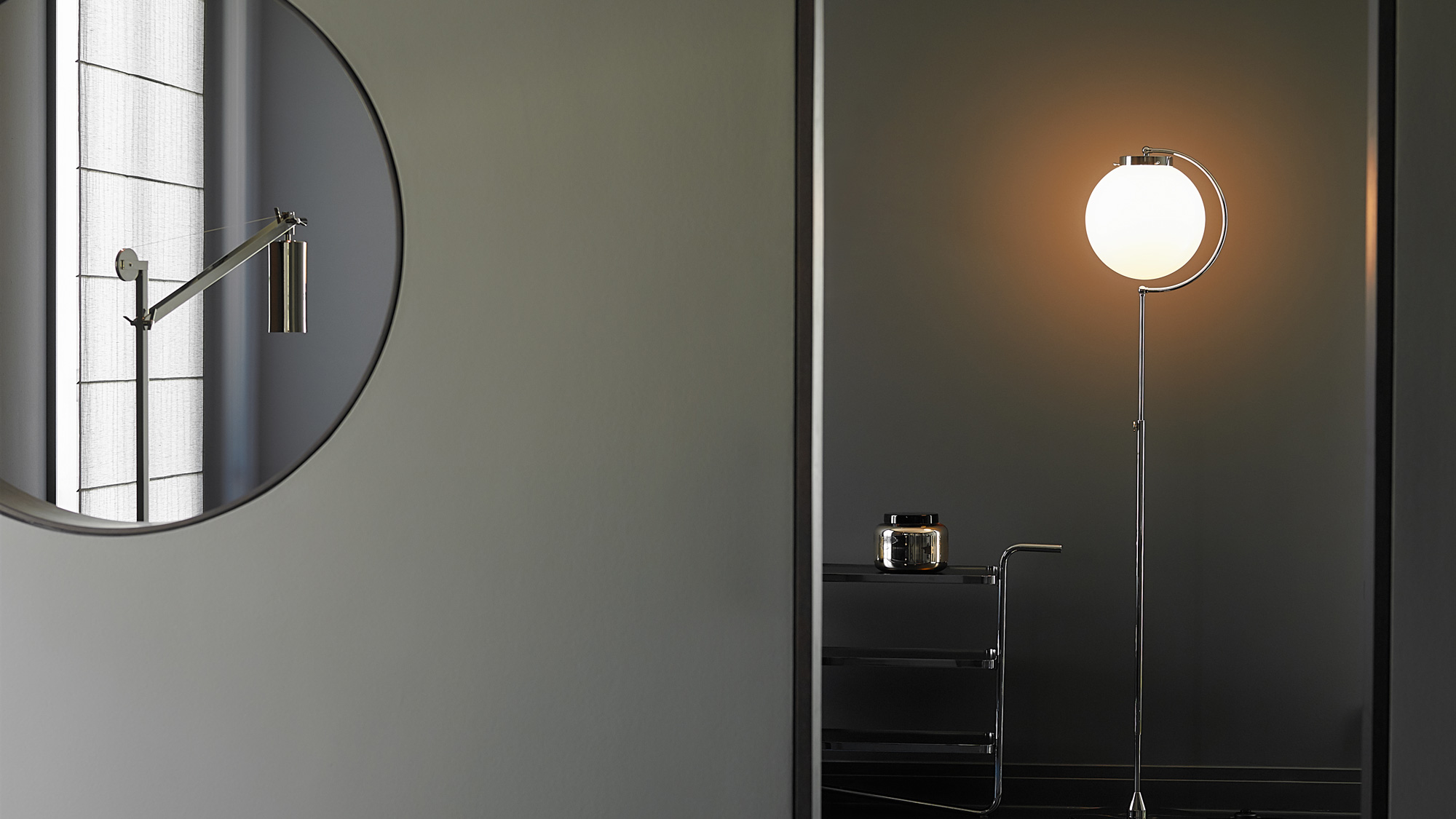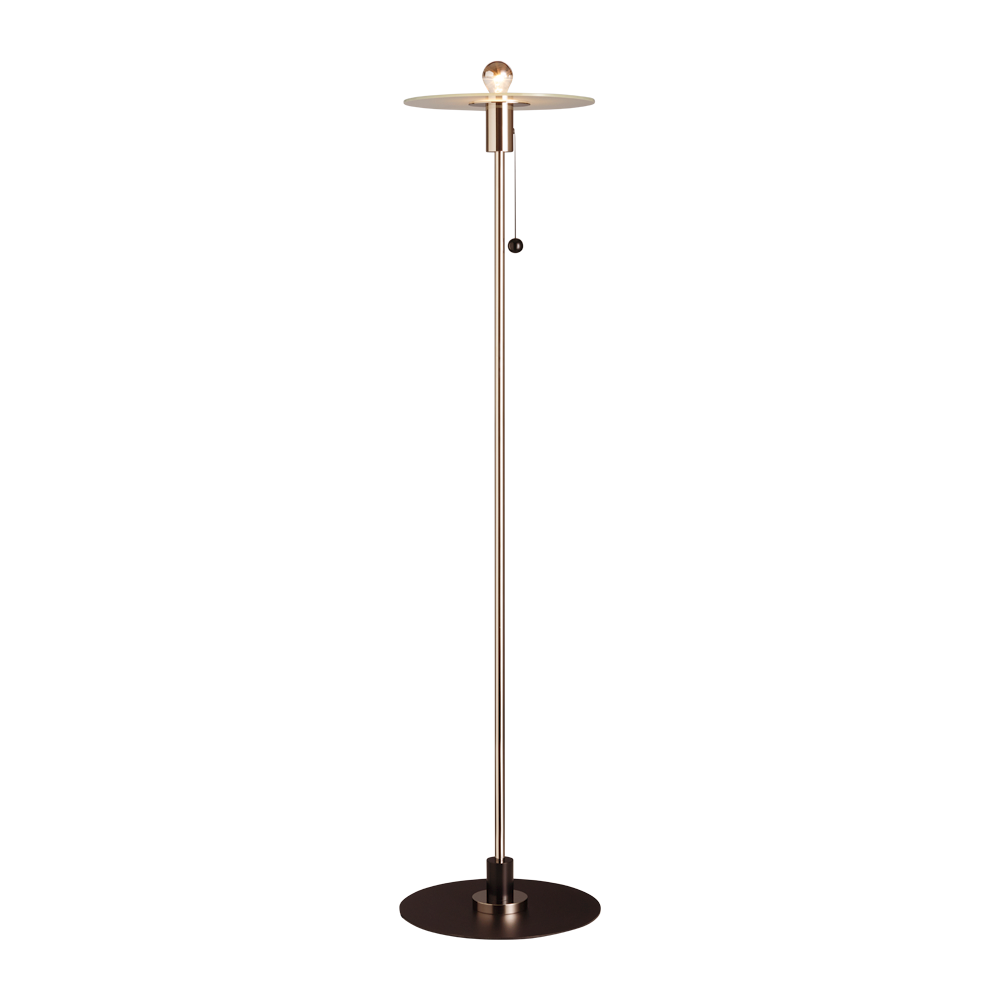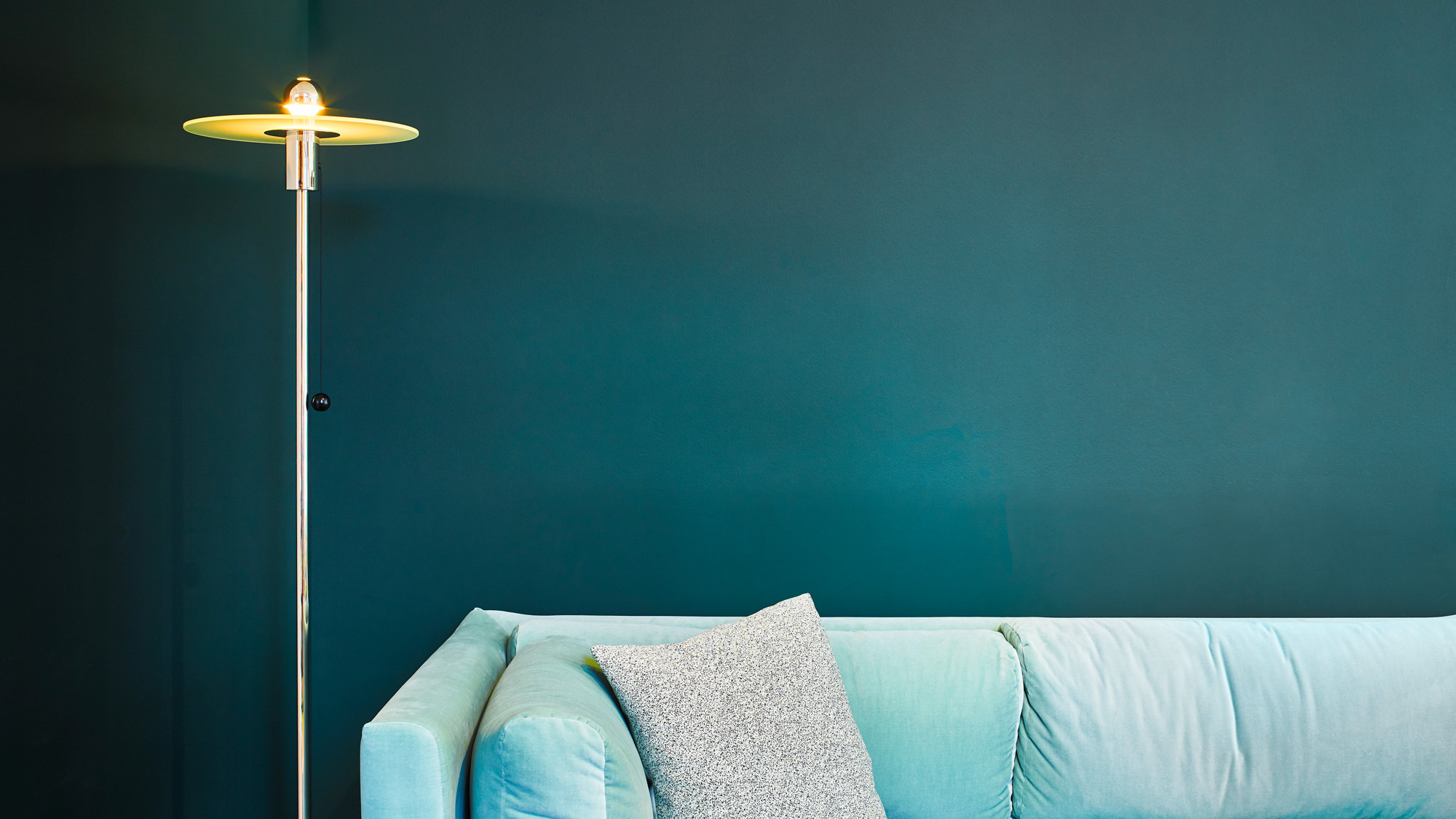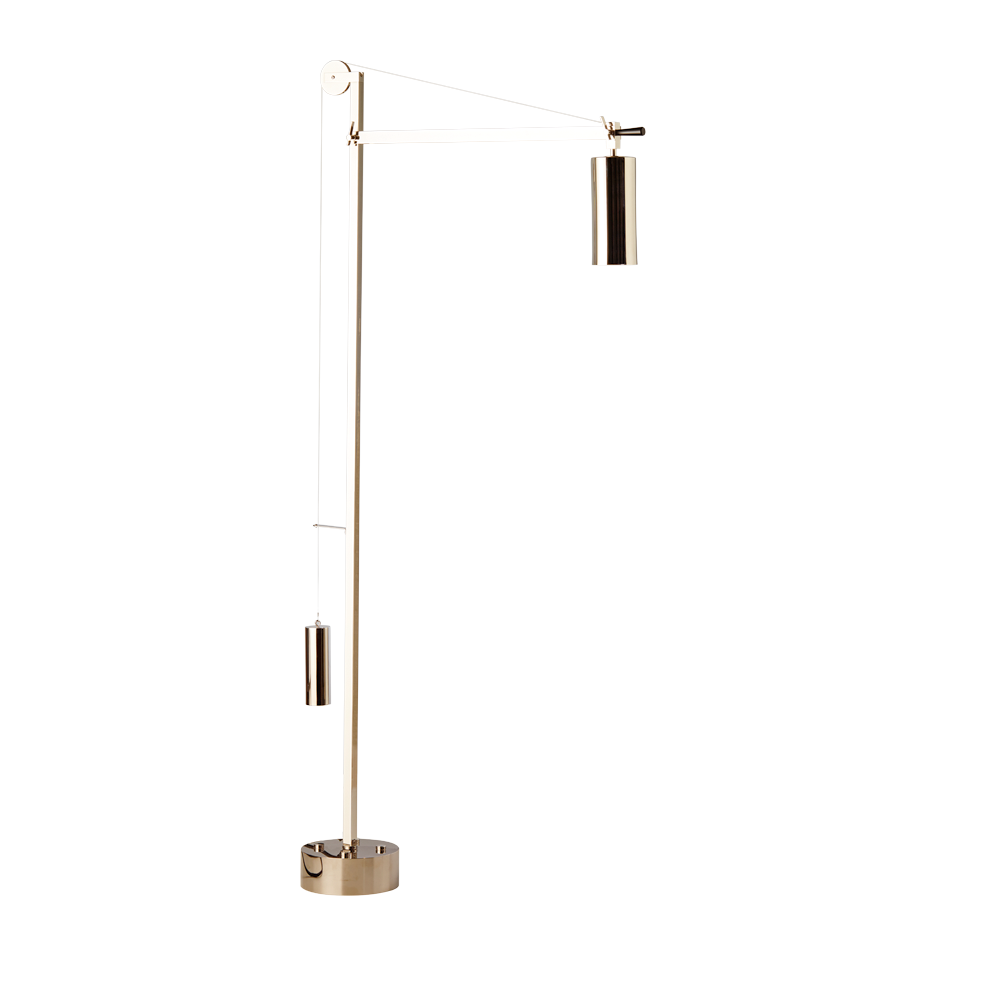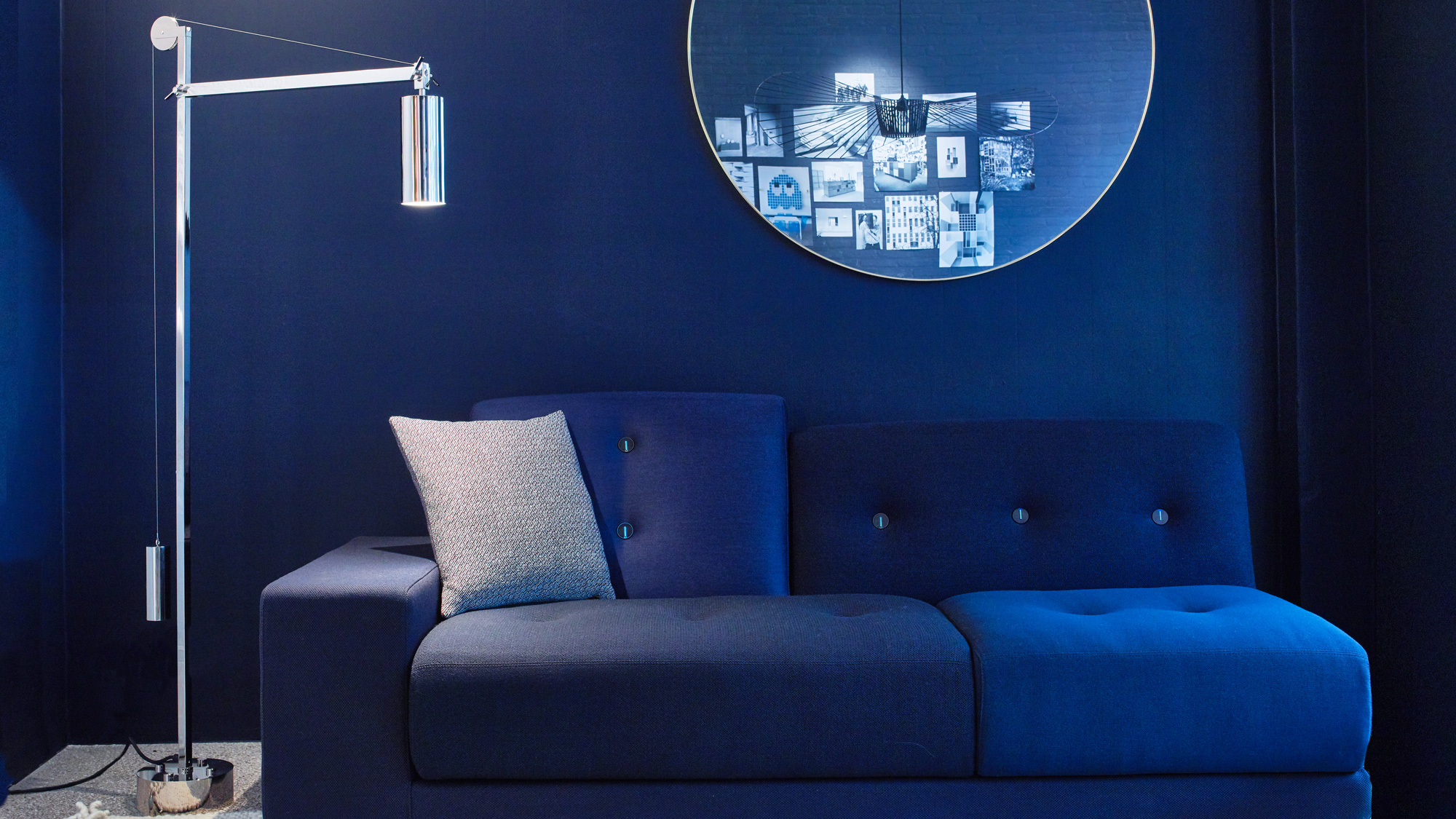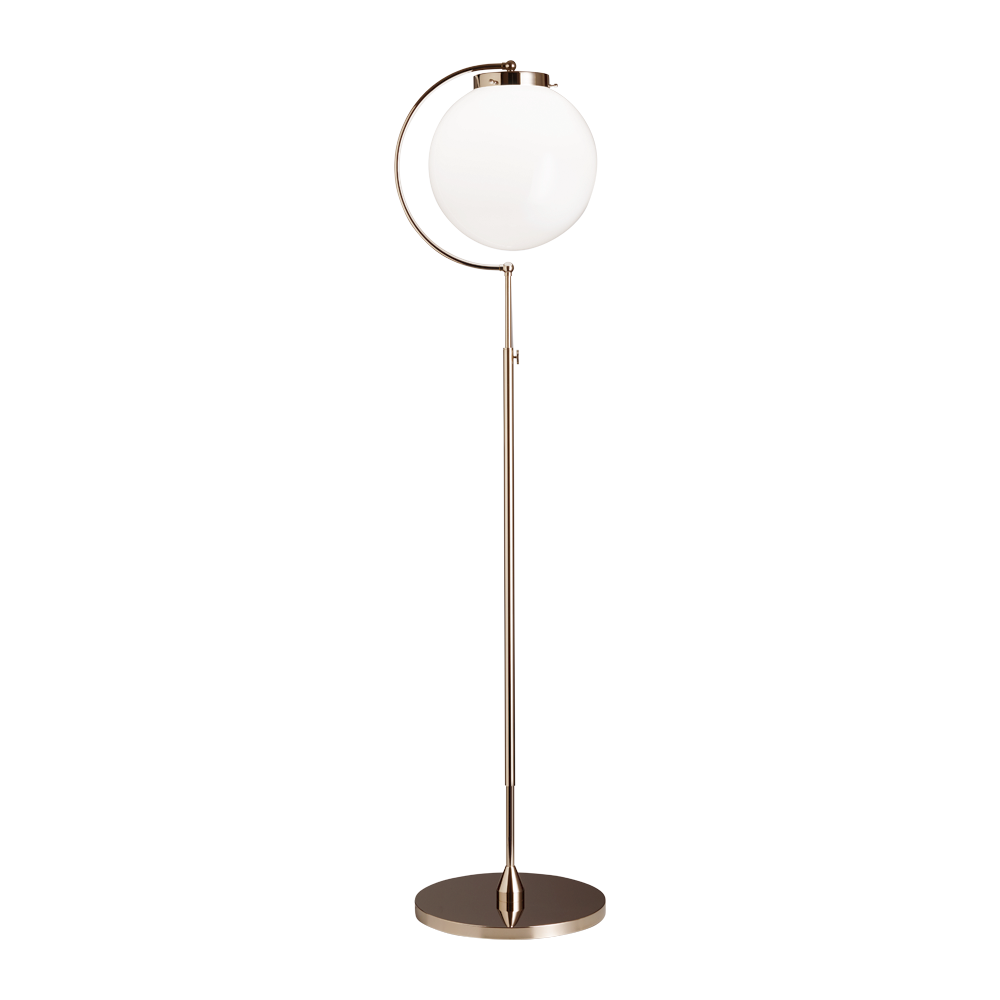
DSL 23 - This floor lamp from 1923 clearly illustrates the formative style of the Bauhaus era, although its designer, architect Richard Döcker, never studied or taught at Bauhaus. Here, clear shapes and lines are paired with high functionality and refined details. Although the DSL 23 might look plain and simple, it is an elegant eyecatcher thanks to the almost free-floating suspension of the lamp head. The light ball made of opal glass emits a particularly atmospheric light. The floor lamp thus helps create very effective mood lighting and acts as a brilliant design feature in private space such as living rooms, studies or bedrooms, or equally in prestigious areas of commercial and industrial premises.
